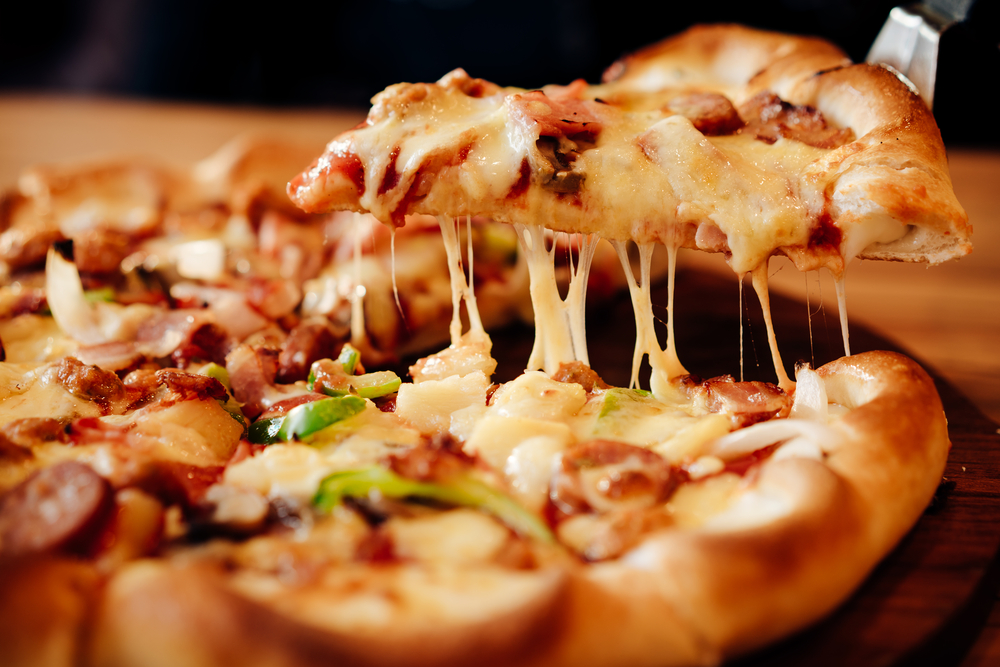As a pasta lover, I know how frustrating it can be to have your pasta go cold before you’re ready to eat it. Keeping pasta warm can be tricky, but with the right techniques, you can serve hot and delicious pasta every time. In this article,
I will share tips and tricks for keeping pasta warm, whether you’re serving it at a party, buffet, or family dinner.
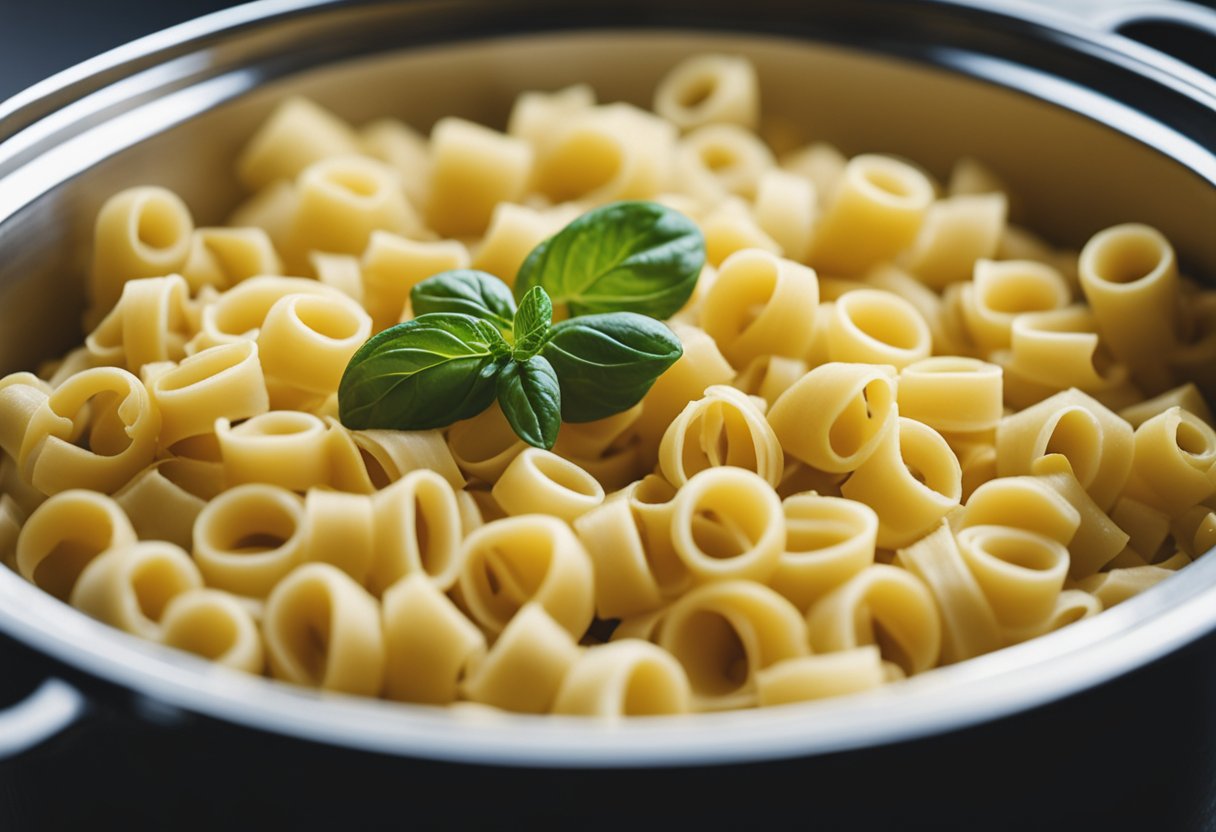
Understanding the basics of pasta is crucial to keeping it warm. Choosing the right pasta for your needs, cooking it correctly, and maintaining its moisture are all important factors.
Additionally, preventing pasta from sticking and serving it properly can make all the difference in keeping it warm and delicious. In this article, I will cover all of these topics and more to help you keep your pasta warm and tasty.
Key Takeaways
- Keeping pasta warm is all about maintaining its moisture and preventing it from sticking.
- Using a slow cooker or crockpot is a great way to keep pasta warm for a crowd.
- Serving pasta in a chafing dish or pot within a pot can help retain heat and moisture.
Understanding the Basics of Pasta
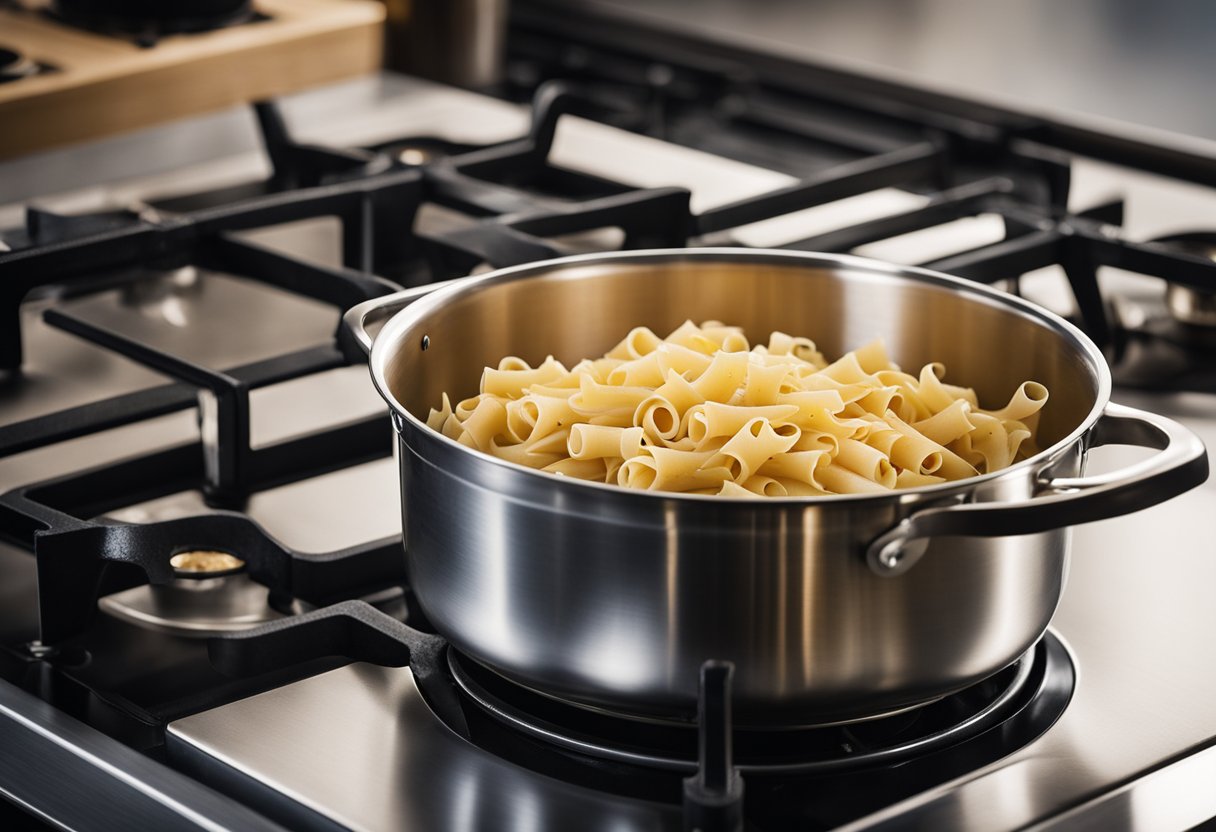
As someone who loves to cook, I understand that pasta is a staple in many households. It’s versatile, easy to cook, and delicious.
However, not everyone knows the basics of cooking pasta. In this section, I will provide some essential information about pasta that will help you cook it perfectly every time.
Types of Pasta
There are many types of pasta available in the market, and each type has a different texture and shape. Some of the most popular types of pasta include spaghetti, penne, fusilli, and macaroni.
Fresh pasta is also available, which is made from flour, eggs, and water. Fresh pasta has a delicate texture and requires less cooking time than dried pasta.
Cooking Pasta
Cooking pasta is a simple process, but it’s essential to get it right. The first step is to bring a large pot of water to a boil. It’s important to add salt to the water to enhance the flavor of the pasta. The general rule of thumb is to add one tablespoon of salt per quart of water.
Once the water comes to a boil, add the pasta and stir it to prevent it from sticking together. Cook the pasta until it’s al dente, which means it’s cooked but still has a firm texture. Overcooked pasta becomes mushy and loses its flavor.
Al Dente
Al dente is an Italian term that means “to the tooth.” It refers to pasta that’s cooked until it’s firm to the bite. Al dente pasta has a slightly chewy texture and is perfect for sauces that cling to the pasta.
Boiling Water
Boiling water is an essential part of cooking pasta. It’s important to bring the water to a rolling boil before adding the pasta. If the water is not hot enough, the pasta will become mushy and lose its texture.
Salt
Adding salt to the water is crucial for enhancing the flavor of the pasta. The salt also helps to season the pasta from the inside out. It’s important to add the salt to the water before adding the pasta.
Stirring
Stirring the pasta is essential to prevent it from sticking together. It’s important to stir the pasta as soon as it’s added to the water and then again after a few minutes. Stirring the pasta also helps to ensure that it’s cooked evenly.
In summary, understanding the basics of pasta is essential for cooking it perfectly every time. Knowing the different types of pasta, cooking it al dente, boiling water, adding salt, and stirring are all critical factors that contribute to a delicious and satisfying pasta dish.
Choosing the Right Pasta for Your Needs
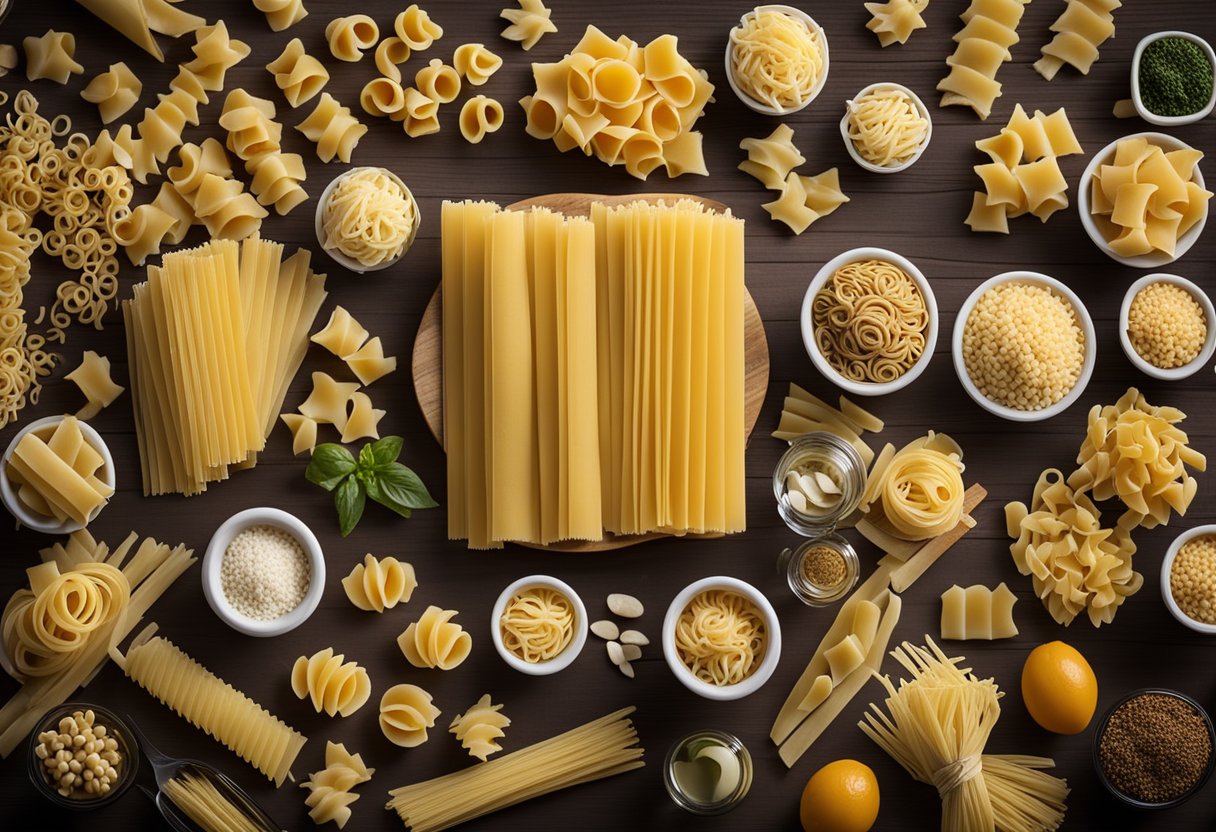
When it comes to keeping pasta warm, choosing the right type of pasta is important. Some types of pasta hold up better than others, and certain shapes and sizes are better suited for different dishes.
Here are some tips to help you choose the right pasta for your needs:
Spaghetti
Spaghetti is a classic pasta shape that works well in a variety of dishes. It’s long and thin, which makes it easy to serve and eat.
Spaghetti is also a great option if you’re looking for a pasta that will stay warm for a long time. Its thin shape means that it doesn’t retain heat as well as thicker pasta shapes, so it won’t get cold as quickly.
Lasagna
Lasagna is a wide, flat pasta shape that’s perfect for layering in a casserole dish. It’s a great choice if you’re looking for a pasta that will hold up well in the oven.
Lasagna is also a good option if you’re serving a large group of people, as it’s easy to portion out and serve.
Noodles
Noodles are a versatile pasta shape that can be used in a variety of dishes. They come in different shapes and sizes, from thin vermicelli to wide egg noodles. When it comes to keeping noodles warm, it’s important to choose a shape that will hold up well.
Thicker noodles like fettuccine and linguine are good options, as they won’t get mushy or break apart when kept warm.
Spaghetti Noodles
Spaghetti noodles are similar to spaghetti, but they’re shorter and thicker. They’re a great option if you’re looking for a pasta that’s easy to serve and eat.
Spaghetti noodles are also a good choice if you’re serving a dish that has a lot of sauce, as they can hold up well and won’t get soggy.
Cooking Pasta Correctly
When it comes to keeping pasta warm, it’s important to start with properly cooked pasta.
Here are some tips for cooking pasta correctly:
- Use a large pot with plenty of water. The general rule of thumb is to use one gallon of water per pound of pasta.
- Bring the water to a rolling boil before adding the pasta. This will help prevent the pasta from sticking together.
- Add salt to the water before adding the pasta. This will help flavor the pasta and prevent it from sticking together.
- Stir the pasta occasionally while it cooks. This will help prevent it from sticking to the bottom of the pot.
- Cook the pasta until it is al dente. Al dente pasta is cooked but still firm to the bite. This will ensure that the pasta doesn’t become mushy or overcooked.
- Drain the pasta immediately after cooking. Don’t let it sit in the hot water, as this can cause it to become overcooked or mushy.
By following these tips, you can ensure that your pasta is cooked correctly and ready to be kept warm for your next meal.
Keeping Pasta Warm
As a pasta lover, I know how important it is to serve pasta hot and fresh. However, it can be challenging to keep pasta warm for an extended period without it becoming sticky or dry.
Here are some tips on how to keep your pasta warm and delicious.
Use a Heat Source
One of the easiest ways to keep pasta warm is to use a heat source. You can use a slow cooker, a chafing dish, or a warming tray to keep your pasta warm.
These heat sources are designed to keep food at a consistent temperature, which makes them perfect for keeping pasta warm for an extended period.
Cover the Pasta
Covering your pasta is essential to keep it warm and prevent it from drying out. You can use a lid or cover the pasta with aluminum foil to keep the heat in. Make sure that the cover is snug and fits tightly to prevent any heat from escaping.
Maintain the Temperature
Maintaining the temperature of your pasta is crucial to keep it warm and delicious. You can use a thermometer to monitor the temperature of your pasta and adjust the heat source accordingly. The ideal temperature for pasta is between 140°F and 160°F.
Keep the Pasta Moist
Keeping the pasta moist is essential to prevent it from becoming dry and sticky. You can add a small amount of olive oil or butter to the pasta to keep it moist. You can also add a little bit of water or chicken broth to the pasta to keep it moist and flavorful.
Serve in a Pot Within a Pot
Another way to keep pasta warm is to serve it in a pot within a pot. Fill a large pot with hot water and place a smaller pot inside. Put your cooked pasta in the smaller pot and cover it with a lid. The hot water will keep the pasta warm without overcooking it.
By following these tips, you can keep your pasta warm and delicious for an extended period. Whether you are hosting a party or serving a family dinner, these tips will help you keep your pasta warm and fresh.
Using a Slow Cooker or Crockpot
If you want to keep pasta warm for an extended period, using a slow cooker or crockpot is your best bet. These kitchen appliances are designed to keep food warm for hours without overcooking or drying it out.
To use a slow cooker or crockpot to keep your pasta warm, follow these simple steps:
- Cook the pasta on the stove according to the package directions.
- Grease the inside of the slow cooker or crockpot generously with olive oil or non-stick cooking spray while the pasta cooks. This will prevent the pasta from sticking to the sides.
- Drain the cooked pasta thoroughly using a colander.
- Pour the cooked pasta into the slow cooker or crockpot and set the temperature to “warm.”
- Cover the slow cooker or crockpot and let it sit until you’re ready to serve the pasta.
It’s important to note that you should periodically check the pasta to make sure it’s still warm and not drying out. You can also add a little bit of water or sauce every 30 minutes to keep the pasta moist and prevent it from sticking together.
Overall, using a slow cooker or crockpot is an excellent way to keep your pasta warm and ready to serve for hours without sacrificing its texture or flavor.
Maintaining Pasta Moisture
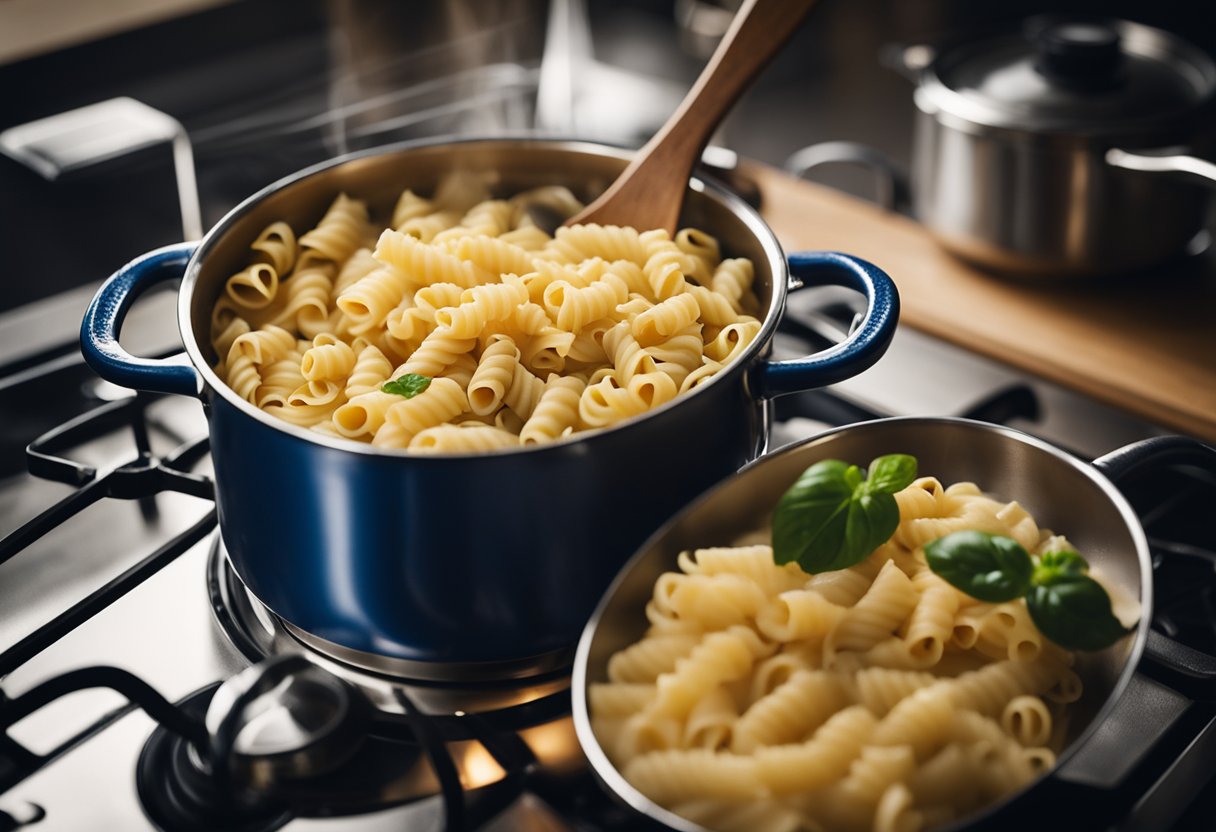
As an experienced cook, I know that keeping pasta warm and moist can be a tricky task. No one likes to eat dry and sticky pasta, especially when it’s meant to be served as a main course.
Therefore, I always make sure to maintain pasta moisture when I’m cooking for a large group of people.
One of the best ways to maintain pasta moisture is by using a hot water bath. This method involves placing the cooked pasta in a heatproof bowl and then placing the bowl in a larger bowl filled with hot water.
This will keep the pasta warm without drying it out. Make sure to stir the pasta occasionally to prevent it from sticking together.
Another method that works well is using a double boiler. This method involves placing the cooked pasta in a heatproof bowl and then placing the bowl on top of a pot of boiling water.
This will keep the pasta warm without drying it out. Make sure to cover the bowl with a lid to trap in the moisture.
Additionally, you can also add a little bit of olive oil or butter to the cooked pasta to help maintain its moisture.
This will prevent the pasta from drying out and sticking together. Just make sure not to add too much oil or butter, as this can make the pasta too greasy.
In conclusion, maintaining pasta moisture is crucial to serving a delicious and satisfying meal. By using a hot water bath or a double boiler, and adding a little bit of oil or butter, you can keep your pasta warm and moist for an extended period of time.
Preventing Pasta from Sticking
As a pasta lover, I know how frustrating it can be to have your perfectly cooked pasta sticking together. But fear not, with a few simple steps, you can prevent your pasta from sticking and enjoy a delicious meal.
Firstly, make sure you use enough water to cook your pasta. A general rule of thumb is to use 4-6 quarts of water per pound of pasta. This ensures that the pasta has enough room to move around and cook evenly.
Once the water is boiling, add a tablespoon of salt and then add the pasta. Give it a quick stir to prevent any clumping or sticking. After a minute or two, stir occasionally to prevent the pasta from sticking together.
If you’re worried about your pasta sticking, you can add a tablespoon of olive oil to the water. This helps to coat the pasta and prevent it from sticking together. However, be careful not to add too much oil as it can make the pasta slippery and affect the texture.
After the pasta is cooked, drain it in a colander and give it a quick rinse with cold water. This stops the cooking process and removes any excess starch that can cause the pasta to stick.
Finally, if you’re not serving the pasta immediately, toss it with a little bit of olive oil to prevent it from sticking together. Cover it with a lid or foil to keep it warm until you’re ready to serve.
By following these simple steps, you can prevent your pasta from sticking and enjoy a delicious meal without any frustration.
Serving Pasta at a Party or Buffet
When serving pasta at a party or buffet, it is important to keep it warm and fresh for your guests.
Here are a few tips to help you do just that:
Use a Chafing Dish
A chafing dish is a great way to keep pasta warm for a pasta bar or a party. Simply fill the dish with hot water and place the pasta in a pan on top.
Light the sterno and adjust the flame to keep the pasta warm without overcooking it. Just make sure that the pan of pasta is not directly over the flame.
Use Aluminum Foil
If you don’t have a chafing dish, you can still keep your pasta warm by covering it with aluminum foil. After cooking the pasta, drain it and place it in a serving dish. Cover the dish with foil to keep the pasta warm until it is ready to be served.
Serve the Pasta in Small Batches
If you are serving a large group, it may be best to serve the pasta in small batches. This will help ensure that the pasta stays warm and fresh for your guests. Simply cook the pasta in small batches and keep each batch warm until it is ready to be served.
Keep the Pasta Covered
Whether you are using a chafing dish or aluminum foil, it is important to keep the pasta covered to prevent it from drying out. This will help ensure that the pasta stays warm and fresh for your guests.
By following these simple tips, you can serve delicious, warm pasta at your next party or buffet without any worries.
Handling Leftover Pasta
As much as we try to portion our pasta dishes correctly, sometimes there are leftovers. But don’t worry, there are ways to handle leftover pasta to keep it fresh and delicious for your next meal.
First, let the pasta cool down to room temperature before storing it in an airtight container. If the pasta is still warm, it can create condensation and make the pasta soggy.
If you’re planning to eat the leftover pasta within a day or two, store it in the fridge. Make sure to cover it with a lid or plastic wrap to prevent it from drying out. You can also add a bit of olive oil or butter to the pasta to keep it moist.
When reheating the pasta, avoid using the microwave. The microwave can make the pasta rubbery and unevenly heated. Instead, heat the pasta in a covered pot on low heat with a bit of water or sauce to keep it moist.
If you want to keep the pasta fresh for longer, you can freeze it. Place the pasta in a freezer-safe container and label it with the date. When you’re ready to eat it, let it thaw in the fridge overnight and reheat it on the stove.
By following these tips, you can keep your leftover pasta fresh and delicious for your next meal.
Adding Sauce to Pasta
When it comes to keeping pasta warm, adding sauce can be a bit tricky. If you’re using a fresh pasta sauce, you’ll want to make sure it’s heated up before adding it to the pasta. This will help keep the pasta warm for longer and prevent it from getting sticky.
To heat up the sauce, you can either do it on the stove or in the microwave. If you’re using a stove, simply heat the sauce up in a pot over medium heat until it’s hot.
If you’re using a microwave, put the sauce in a microwave-safe dish and heat it up for 30 seconds at a time, stirring in between until it’s hot.
Once the sauce is heated up, add it to the pasta and mix well. This will not only keep the pasta warm, but it will also give it a nice texture and flavor. Make sure to add enough sauce to coat all of the pasta evenly.
If you’re using a store-bought pasta sauce, you may not need to heat it up before adding it to the pasta. Check the label to see if the sauce is meant to be heated up or can be used straight out of the jar.
Overall, adding sauce to pasta can be a great way to keep it warm and add some flavor. Just make sure to heat up the sauce beforehand if it’s fresh and mix it well with the pasta.
Challenges and Solutions
When it comes to keeping pasta warm, there are a few challenges that can arise. One of the biggest challenges is the length of time that the pasta needs to be kept warm.
If you are serving a large group of people, it can take some time to get everyone served, and you want to make sure that the pasta stays warm throughout the meal.
Another challenge is attention. You don’t want to spend the entire meal worrying about the pasta, but you also don’t want it to get cold. You need a solution that will keep the pasta warm without requiring constant attention.
An outlet can also be a challenge. If you are serving pasta outdoors or in a location without access to an outlet, you need a solution that doesn’t require electricity.
Handling can also be an issue. You want to make sure that the pasta stays warm, but you also don’t want it to become mushy or overcooked.
Fuel can also be a challenge. If you are using a chafing dish or slow cooker, you need to make sure that you have enough fuel to keep the pasta warm for the entire meal.
To overcome these challenges, there are several solutions that can be used. One solution is to use a chafing dish with sternos.
This is a great option for keeping the pasta warm for a few hours while waiting for the guests to arrive. Just make sure that the pan of pasta is not directly over the fire.
Another solution is to use a slow cooker. Cook the pasta as usual, then transfer it to the slow cooker set on the “warm” setting. Add a small amount of olive oil or butter to the pasta to prevent it from sticking together. Stir occasionally to ensure even heating.
If you don’t have access to electricity, you can use the pot within a pot method. Fill a large pan halfway full of water and set it on medium or low heat on the stove.
Heat the water to about 160 °F (71 °C). Place a second pot or pan inside the water bath. Add your cooked and drained pasta to that pot or pan. If you have any sauce, add that into the pot or pan as well. Cover this second pot or pan to retain moisture.
Finally, if you need to transport the pasta, you can use a cooler. Place the cooked pasta in a large resealable plastic bag and place the bag in a cooler. Fill any empty space in the cooler with towels or other insulating material to keep the pasta warm.
Also, here are some similar posts:
Frequently Asked Questions

How do I keep my pasta warm for a party?
One way to keep pasta warm for a party is to use a chafing dish with sternos. This method involves using a pot within a pot to keep the pasta warm for a few hours while waiting for guests to arrive.
Another way is to preheat serving dishes in an oven at low heat for 10-15 minutes. The serving dish should be oven-safe and heat-resistant.
What’s the best way to keep spaghetti noodles warm?
One of the best ways to keep spaghetti noodles warm is to soak them in a hot water bath. Fill a large pan halfway full of water and set it on medium or low heat on the stove.
Heat the water to about 160°F (71°C). Place a second pot or pan inside the water bath and add your cooked and drained spaghetti noodles to that pot or pan. If you have any sauce, add that into the pot or pan as well.
How can I prevent my pasta from drying out?
To prevent pasta from drying out, make sure to cook it al dente. Rinse the pasta under cold water after cooking to remove any excess starch.
Toss the pasta with a little bit of olive oil or butter to keep it from sticking together. Cover the pasta with a damp towel or plastic wrap to prevent it from drying out.
How do restaurants keep their pasta from sticking?
Restaurants keep their pasta from sticking by cooking it in a large pot of boiling salted water. They stir the pasta frequently to prevent it from sticking together.
After cooking, they quickly drain the pasta and toss it with a little bit of olive oil or butter to keep it from sticking together.
Can I reheat pasta without it drying out?
Yes, you can reheat pasta without it drying out. One way is to reheat it in a saucepan with a little bit of water or broth. Another way is to reheat it in the microwave with a damp paper towel over the top to prevent it from drying out.
How long can I keep cooked pasta warm?
You can keep cooked pasta warm for up to two hours. After that, it is best to discard any leftover pasta. To keep the pasta warm, use one of the methods mentioned above, such as soaking it in a hot water bath or using a chafing dish with sternos.







